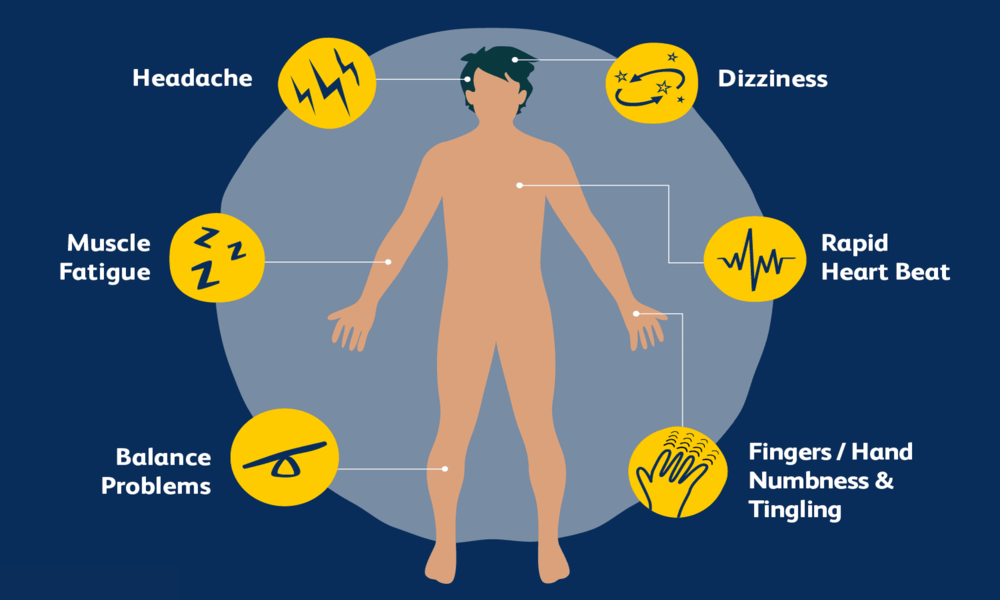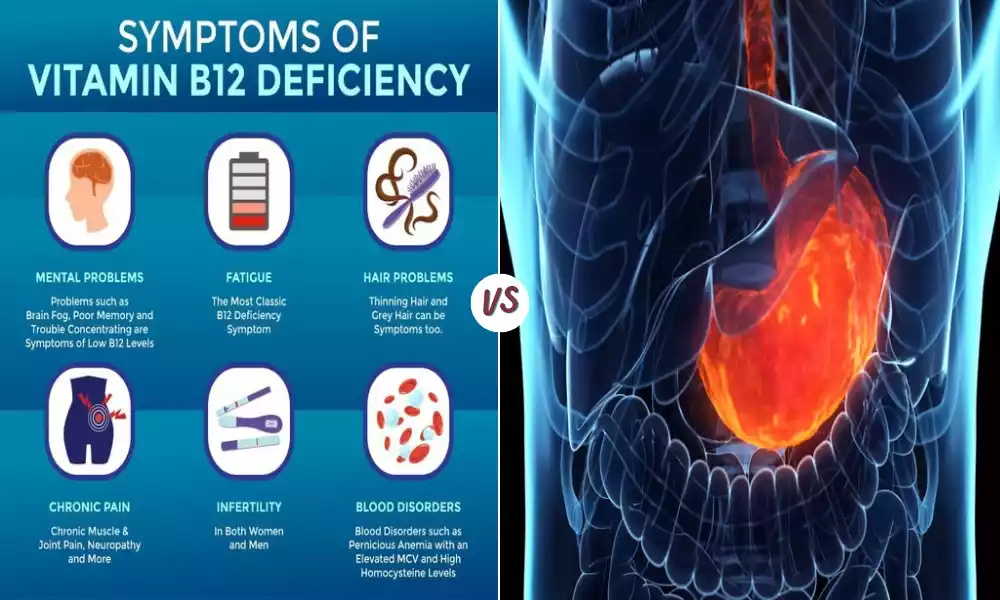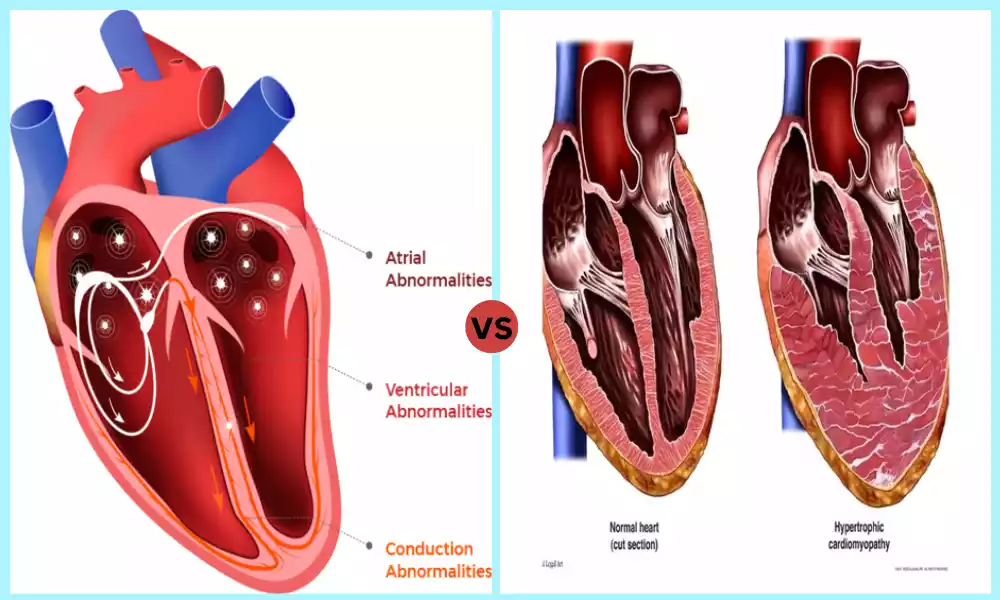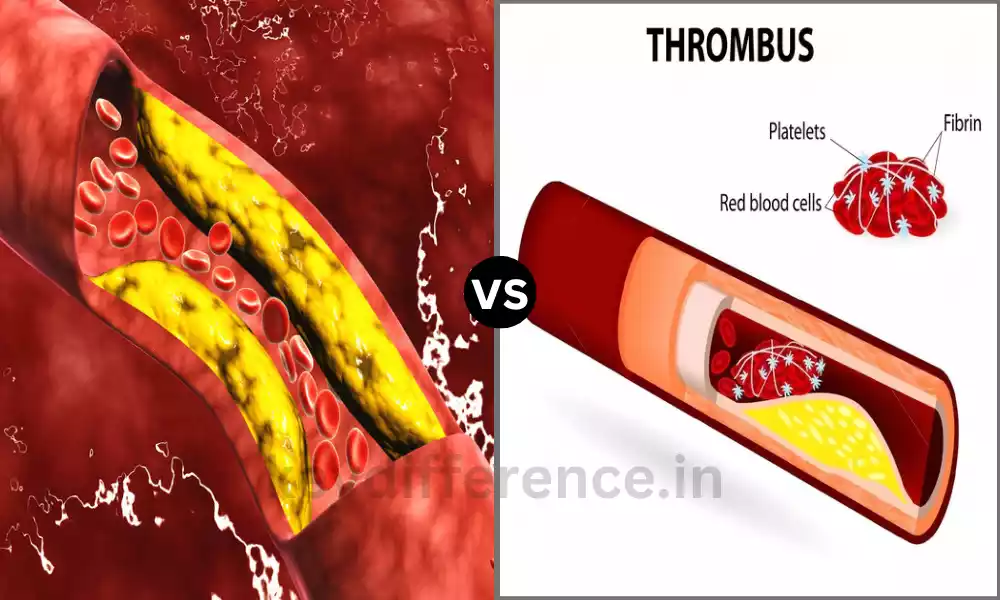Health and well-being require understanding the differences between B12 deficiency and pernicious anemia although similar, each condition possesses distinct features and impacts on the body.
This brief overview will shed light on their key distinctions by offering insights into causes, symptoms, diagnosis methods, treatment approaches, etc. We can then utilize this knowledge to better navigate their complexities while making more informed healthcare decisions.
What is B12 Deficiency?
Vitamin B12 deficiency occurs when an individual doesn’t get an adequate supply of this essential nutrient, which plays a vital role in body functions such as producing red blood cells, DNA synthesis, and nerve function. B12 can mainly be obtained through diet from animal products or fortified products containing B12.
If their bodies don’t receive sufficient amounts, it can lead to various health problems that affect bodily functions – from decreased red blood cell production, DNA synthesis, or nerve function issues to anemia and cardiovascular problems.
B12 deficiency may result from diets lacking B12-rich foods (such as vegans and vegetarians), gastrointestinal disorders that impede B12 absorption, certain medications, or medical conditions that affect the stomach or small intestine’s ability to absorb nutrients.
As a result, individuals suffering from B12 deficiency might experience fatigue, weakness, pale skin tone, shortness of breath, numbness or tingling in extremities as well as cognitive difficulties.
Diagnosing B12 deficiency often involves blood tests that measure the body’s B12 levels. Treatment options typically involve oral or injectable B12 supplements; in certain instances, dietary and lifestyle modifications may also be advised as means to address its root causes.
Recognizing and treating B12 deficiency quickly is of utmost importance, as untreated cases may lead to more severe consequences affecting nervous system health, cardiovascular wellbeing, and overall well-being.

What is Pernicious Anemia?
Pernicious anemia is a type of anemia caused by vitamin B12 deficiency in the body. What sets pernicious anemia apart from other forms of B12 deficiency is its root cause – an autoimmune condition that inhibits the production of intrinsic factor protein that facilitates B12 absorption via small intestinal absorption.
Pernicious anemia is an autoimmune disease in which the immune system mistakenly attacks stomach-lining cells that produce intrinsic factors. Without intrinsic factors, B12 cannot be effectively absorbed from the diet even when an individual consumes an adequate amount. As a result, red blood cell counts decline leading to anemia–a condition in which the oxygen delivery capability of blood decreases significantly.
Pernicious anemia’s symptoms often mimic those of B12 deficiency, including fatigue, weakness, pale skin, and cognitive difficulties. Furthermore, individuals suffering from pernicious anemia might also experience neurological symptoms like numbness or tingling in the extremities, difficulty with balance and coordination as well as mood disturbances.
Pernicious anemia requires specific tests, including ones to assess B12 levels and detect antibodies to intrinsic factors. Treatment often entails regular B12 injections due to a lack of intrinsic factor production oral supplements might not work as effectively due to this factor being missing.
Close management and close monitoring are vital to ensure any complications due to B12 deficiency are avoided while simultaneously managing its autoimmune component. Recognizing and treating pernicious anemia as soon as possible is critical to avoiding potential neurological damage and improving the quality of life for individuals affected by this condition.

Importance of understanding the differences between B12 Deficiency and Pernicious Anemia
Recognizing the distinctions between B12 deficiency and pernicious anemia is of vital importance, both for medical reasons as well as ethical ones:
Accurate Diagnosis and Treatment: Correct diagnosis and appropriate treatment depend upon accurately distinguishing between these conditions, though both share similar symptoms their underlying causes vary substantially, so precise identification ensures individuals receive effective interventions whether this involves diet modifications, B12 supplementation, or more advanced therapies such as injections.
Prevention: Pernicious anemia with its autoimmune component and potential neurological side effects requires specific management strategies. Early recognition can prevent irreversible nerve damage. B12 deficiency treatment also has long-term health implications like fatigue and cognitive impairments that need to be managed effectively.
Customized Medical Care: By understanding the variations, healthcare providers can tailor care that addresses the source of anemia. People suffering from pernicious anemia may require longer monitoring or different approaches than those suffering from B12 deficiency.
Avoid Unnecessary Treatments: Misdiagnosis can result in unnecessary interventions or treatments for instance, administering B12 injections to individuals without intrinsic factor deficiency might not yield the expected results, wasting resources and potentially delaying necessary therapy.
Educational Empowerment: Individuals who understand their healthcare options can become actively engaged in their healthcare decisions, asking informed questions, seeking specialized testing if needed, and working collaboratively with healthcare providers to manage their condition successfully.
Family History and Genetic Considerations: Understanding the autoimmune nature of pernicious anemia could prompt individuals to examine their family tree for any possible genetic predisposition to an autoimmune disorder, thus informing discussions with healthcare providers on preventive measures and lifestyle adjustments that might help.
Public Health Awareness: Raising awareness about these distinctions can aid public health education. Healthcare providers can then communicate more accurately with patients and the wider public regarding these conditions and their potential effects.
Understanding the differences between B12 deficiency and pernicious anemia empowers individuals, enhances medical care, and prevents complications. By emphasizing individual aspects of each condition we can promote early detection, tailored treatment approaches, and overall better health outcomes.
Comparison Table of B12 Deficiency and Pernicious Anemia
Certainly, here’s a comparison table outlining the key differences between B12 deficiency and pernicious anemia:
| Aspect | B12 Deficiency | Pernicious Anemia |
|---|---|---|
| Underlying Cause | Inadequate intake, absorption issues, medications, certain medical conditions | An autoimmune condition affecting intrinsic factor production |
| B12 Absorption | Impaired absorption due to various factors | Lack of intrinsic factor affects B12 absorption |
| Type of Condition | General deficiency of vitamin B12 | The specific type of anemia due to B12 deficiency |
| Common Symptoms | Fatigue, weakness, pale skin, cognitive difficulties | Similar to B12 deficiency, plus neurological symptoms |
| Neurological Symptoms | Possible, but not a defining feature | Common due to nerve damage from B12 deficiency |
| Diagnosis | Blood tests measuring B12 levels | Specialized tests for intrinsic factor antibodies |
| Treatment | B12 supplements, dietary adjustments | Regular B12 injections due to lack of intrinsic factor |
| Long-Term Management | Address underlying causes for sustained improvement | Ongoing injections and monitoring due to the autoimmune aspect |
| Potential Complications | Neurological issues, cardiovascular problems | Neurological damage, increased risk of other autoimmune conditions |
| Importance of Diagnosis | Timely treatment to prevent complications | Early detection to prevent neurological damage |
| Relation to Intrinsic Factor | Not directly related to intrinsic factor | Deficiency caused by an autoimmune attack on intrinsic factor |
| Prevalence | More common due to various causes | Less common due to autoimmune specificity |
Please note that this table provides a concise overview of the differences between B12 deficiency and pernicious anemia.
Each individual’s experience may vary, and medical guidance is essential for accurate diagnosis and treatment.
Why distinguishing between the two is essential
Distinguishing between B12 deficiency and pernicious anemia is of vital importance for diagnosing, treating, and overall patient care.
Below are several key reasons for making the distinction:
Targeted Treatment: Each condition demands its own approach to treatment. While B12 deficiency may be addressed through diet modifications and supplementation, pernicious anemia often requires regular B12 injections due to a lack of intrinsic factors. With tailored therapy plans in place, patients receive the most beneficial interventions and ultimately achieve better health outcomes.
Preventing Unnecessary Procedures: Misdiagnosis may result in unnecessary medical interventions. Administering B12 injections without treating the root cause of pernicious anemia may not provide desired results and could delay appropriate therapy.
Neurological Protection: Pernicious anemia frequently involves neurological symptoms due to B12 deficiency’s effects on nerve function. Early recognition and management can reduce or prevent irreversible neurological damage, which is essential for maintaining the quality of life.
Long-Term Health Management: Understanding the autoimmune nature of pernicious anemia necessitates continuous monitoring and care to address its consequences, with patients diagnosed with this disorder receiving follow-up care to avoid complications and manage associated autoimmune risks.
Resource Allocation: Accurate diagnosis helps healthcare resources be allocated more effectively. By accurately diagnosing each condition, medical professionals can allocate the appropriate testing, treatment, and support, thus decreasing wastage and improving efficiency.
Patient Empowerment: Informing patients about the nature of their condition empowers them to play an active role in their healthcare. Armed with knowledge, informed patients can make better decisions, ask pertinent questions, and adhere to treatment plans more successfully.
Public Health Awareness: Accurately distinguishing these conditions contributes to public health education. Healthcare providers can then disseminate accurate information to the public, increasing awareness and understanding of B12-related health concerns.
Avoid Underdiagnosis: In certain instances, individuals can present with pernicious anemia without showing traditional symptoms. Being aware of its specific markers and risk factors can help avoid underdiagnosis and ensure appropriate management.
Delineating between B12 deficiency and pernicious anemia is key for optimizing patient care, avoiding complications, and providing targeted treatments. Doing so allows both healthcare providers and patients to make informed decisions that improve health outcomes and overall well-being.
Encouragement for medical consultation if symptoms are present
Identification of symptoms related to B12 deficiency or pernicious anemia is only part of the solution; further steps need to be taken if fatigue, weakness, pale or jaundiced skin tone, cognitive difficulties, or neurological sensations such as numbness or tingling arise. It’s vital that anyone experiencing such issues seek professional advice immediately.
Here is why medical consultation should be so essential:
Expert Diagnosis: Only healthcare providers have the necessary skills and experience to correctly identify B12 deficiency or pernicious anemia, distinguish between the two conditions and identify any possible underlying causes.
Customized Care: Treatment plans for B12 deficiency and pernicious anemia should be tailored specifically to an individual’s unique needs and underlying condition. Seeking medical advice ensures your treatment plan will be tailor-made, targeted, and most beneficial to your specific circumstances.
Early Intervention: Early medical attention can prevent complications and long-term health issues, as soon as they’re detected. As soon as these issues have been recognized, targeted interventions can be implemented more rapidly, leading to improved results and results.
Sustaining Treatment: Treating B12 deficiency or pernicious anemia requires ongoing medical support and visits with healthcare providers for regular check-ins and adjustments of treatments as necessary. Regular consultations help ensure optimal monitoring and adjustments to treatments if required.
Holistic Care: Healthcare providers who focus on holistic healthcare take into account more than just your symptoms when providing treatment, including lifestyle factors like diet and family history as part of their approach. This ensures you receive comprehensive care.
Peace of Mind: Receiving a proper medical evaluation provides peace of mind, as a definitive diagnosis can alleviate uncertainty and anxiety about your condition and offer clarity as to the path forward for healing. Understanding your condition and having a clear plan forward will bring comfort and confidence to your healthcare journey.
Avoid Self-Diagnosis and Self-Treatment: While online resources and over-the-counter supplements may appear appealing, self-diagnosis and treatment without professional medical guidance may lead to mismanagement and potentially significant health risks. Safe and effective care requires professional assistance from healthcare providers.
If you suspect symptoms indicative of B12 deficiency or pernicious anemia, don’t delay in consulting a healthcare provider. Your well-being is too precious to leave to chance or temporary solutions; trusting in medical experts to diagnose accurately, administer effective treatments, and guide the way toward recovery and optimal health is paramount.
References
Certainly! While I can provide general information, it’s always good to refer to authoritative sources for detailed and specific medical information.
Below are some reputable references that may be useful for a more in-depth study on B12 deficiency and pernicious anemia:
- National Institutes of Health (NIH) Office of Dietary Supplements: Information on Vitamin B12, including dietary sources, recommended intake, and deficiency symptoms.
- Centers for Disease Control and Prevention (CDC): Information on anemia, including pernicious anemia, diagnosis, and treatment.
- American Society of Hematology: Specific resources on pernicious anemia and other types of anemia.
- National Health Service (NHS): Detailed information on B12 deficiency and pernicious anemia, including symptoms, causes, diagnosis, and treatment.
- Mayo Clinic: Comprehensive guides on B12 deficiency and pernicious anemia, with insights on symptoms, causes, risk factors, diagnosis, and more.
Conclusion
Establishing the differences between B12 deficiency and pernicious anemia is crucial to accurate diagnosis and appropriate treatment.
While both conditions involve insufficient Vitamin B12 intake, their causes and management strategies vary significantly, which allows healthcare providers to provide personalized advice in treating these conditions effectively.
If symptoms appear, consulting with healthcare providers immediately is recommended in order to receive tailored professional assistance for managing these conditions properly.







